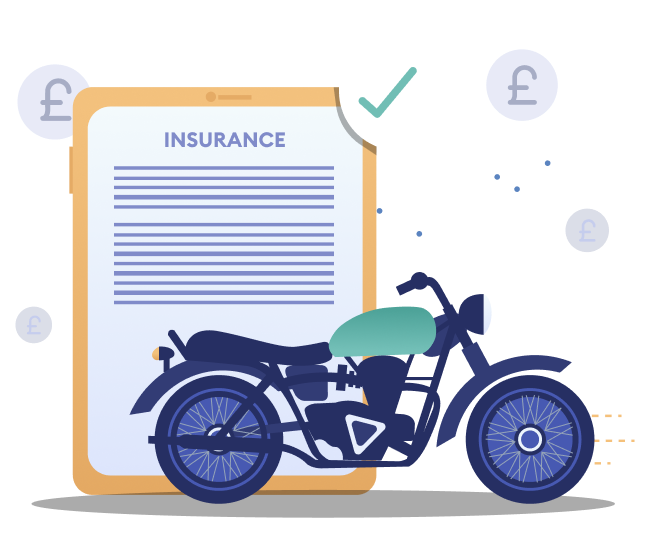Bike insurance, also known as motorcycle insurance, is a type of insurance coverage designed to provide financial protection to individuals who own or operate motorcycles. Like car insurance, it helps mitigate the financial impact of accidents, theft, or damage to the insured motorcycle. Motorcycle insurance is essential for protecting riders and their bikes on the road. It’s important for riders to understand the terms of their policies, choose coverage that meets their needs, and comply with any legal requirements in their area. Bike insurance, commonly known as motorcycle insurance, is a type of financial protection designed for individuals who own or operate motorcycles. It provides coverage for a range of risks associated with motorcycle ownership, including accidents, theft, and damage. Bike insurance is not only a prudent financial decision but is often a legal requirement in many jurisdictions for individuals to ride their motorcycles on public roads.These are general answers, and it’s crucial to review the specific terms and conditions of your bike insurance policy for accurate information.

Feature Of Bike Insurance
Types of Coverage:
- Liability Coverage: Covers bodily injury and property damage that the insured rider may cause to others in an accident.
- Collision Coverage: Pays for damage to the insured motorcycle in the event of a collision, regardless of fault.
- Comprehensive Coverage: Protects against non-collision events, such as theft, vandalism, natural disasters, and collisions with animals.
- Uninsured/Underinsured Motorist Coverage: Provides protection if the insured is in an accident with a driver who has insufficient or no insurance.
Premiums:
Motorcycle insurance premiums are determined by factors such as the rider’s age, riding history, the type of motorcycle, coverage selected, and location.
Deductibles:
Similar to car insurance, a deductible is the amount the policyholder agrees to pay out of pocket before the insurance coverage takes effect.
Policy Limits:
Policies have limits on the maximum amount the insurance company will pay for covered losses. It’s important to understand these limits when selecting a policy.
Additional Coverage Options:
Some policies offer optional coverage, including accessories coverage, roadside assistance, and coverage for custom parts and equipment.
Discounts:
Motorcycle insurance providers may offer discounts for factors such as completing a motorcycle safety course, having a good riding record, or bundling motorcycle insurance with other policies.
Legal Requirements:
Like car insurance, motorcycle insurance is often mandatory in many jurisdictions to legally operate a motorcycle on public roads.
Helmet and Gear Coverage:
Some policies may include coverage for helmets and riding gear, providing financial assistance if these items are damaged in an accident.
No-Fault Insurance:
In some regions, there is a concept known as no-fault insurance for motorcycles, where each party’s insurance covers their own medical expenses and damages, regardless of fault.
Claims Process:
In the event of an accident or covered incident, the policyholder must file a claim with the insurance company. The claims process involves providing details about the incident and, if necessary, getting the motorcycle inspected for damages.
Classic Motorcycle Insurance:
Owners of classic or vintage motorcycles may opt for specialized insurance that takes into account the unique value and characteristics of these bikes.
Rider Experience and Training:
Some insurance providers consider the rider’s experience and whether they have completed advanced training courses when determining premiums.

FAQs Of Bike Insurance
Why do I need bike insurance?
Bike insurance provides financial protection in case of accidents, theft, or damage to your motorcycle. It is often required by law to ride legally on public roads.
What does liability coverage in bike insurance mean?
Liability coverage pays for bodily injury and property damage that you may cause to others while riding your motorcycle.
What is collision coverage in bike insurance?
Collision coverage pays for the repair or replacement of your motorcycle in the event of a collision, regardless of fault.
What does comprehensive coverage in bike insurance cover?
Comprehensive coverage protects your motorcycle from non-collision events such as theft, vandalism, natural disasters, and collisions with animals.
Do I need uninsured/underinsured motorist coverage for my motorcycle?
It’s advisable to have this coverage, as it protects you if you are in an accident with a driver who has insufficient or no insurance.
How are bike insurance premiums determined?
Premiums are influenced by factors such as your age, riding history, the type of motorcycle, coverage selected, and your location.
What is a deductible in bike insurance?
A deductible is the amount you agree to pay out of pocket before your insurance coverage takes effect.
Can I customize my bike insurance policy?
Yes, many insurers offer additional coverage options, allowing you to customize your policy based on your specific needs.
Are there discounts available for bike insurance?
Yes, insurers may offer discounts for completing a motorcycle safety course, having a good riding record, or bundling motorcycle insurance with other policies.
Is bike insurance mandatory?
In many jurisdictions, bike insurance is a legal requirement to ride on public roads. Minimum coverage levels are mandated to ensure financial responsibility in case of accidents.
What is no-fault insurance for motorcycles?
No-fault insurance means that each party’s insurance covers their own medical expenses and damages, regardless of fault.
How does the claims process work for bike insurance?
In the event of an accident or covered incident, you must file a claim with your insurance company. The process involves providing details about the incident, and if necessary, getting the motorcycle inspected for damages.
Can I get coverage for accessories or custom parts on my motorcycle?
Yes, many policies offer coverage for accessories, custom parts, and equipment on your motorcycle. It’s important to check the details of your policy.
Is classic motorcycle insurance different from regular bike insurance?
Yes, classic motorcycle insurance is tailored for vintage or classic bikes, considering their unique value and characteristics.
Does my riding experience and training affect my premiums?
Yes, some insurers consider factors such as rider experience and completion of advanced training courses when determining premiums.
Conclusion
In conclusion, bike insurance is a necessary investment for bike owners as it provides financial protection in case of theft, damage, or accidents. It offers coverage for repairs, medical expenses, and legal liability. Bike insurance also offers additional benefits such as roadside assistance and personal accident coverage. It is essential to carefully review the policy terms and coverage limits to ensure adequate protection.

